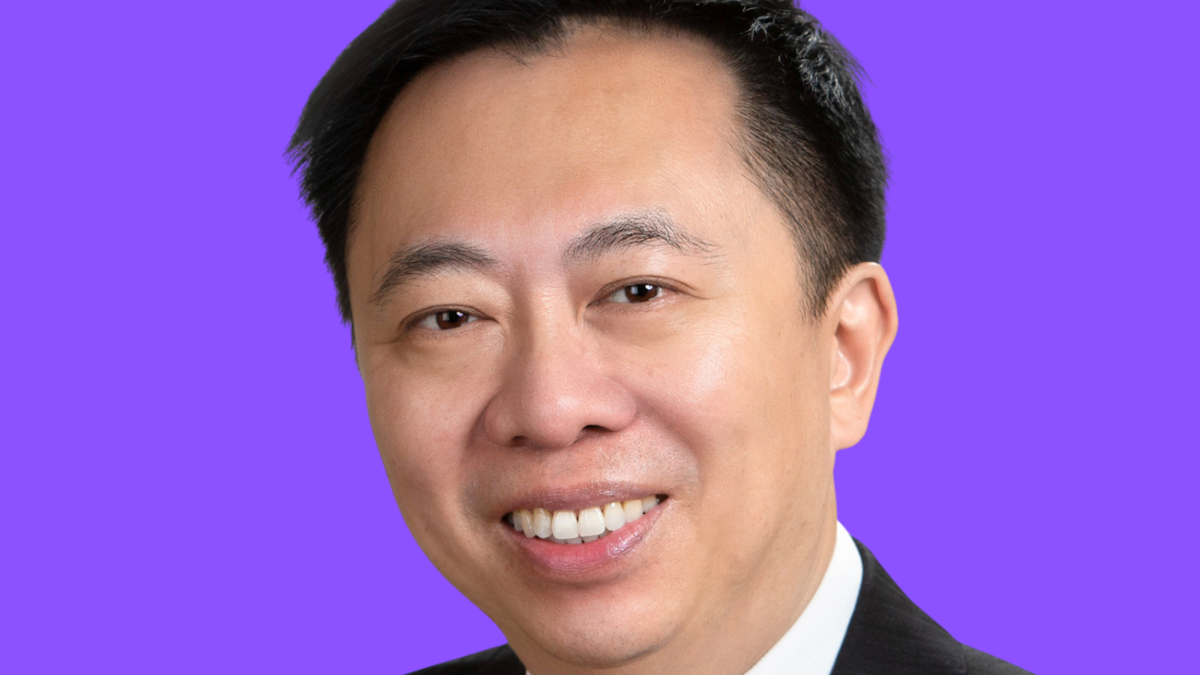Too late for protection? Never, says Allspring
In conjunction with some big Australian institutional investors, the multi-asset quant specialists at Allspring Global Investments are working on what may seem an impossible task. They want to validate a process to give downside protection with maximum upside capture.
“Everyone wants to have their cake and eat it too,” says Martha Delgado, Allspring’s San Francisco-based head of Australian and New Zealand business development. “But there’s always a trade-off with protection. What we are doing is helping those funds with a menu of customised solutions,” she says.
For APRA-regulated super funds, the task is even more challenging because the YFYS performance test discourages deviations too far from the major indices. One of the tools in the protection toolbox is low-volatility stock strategies, which tend to have a higher tracking error against these indices than average.
Delgado was in Australia last week with colleague Wai Lee (photo above), the London-based co-head of systematic research for Allspring’s ‘Systematic Edge’ team. Both have been regular visitors to Australia through their years with Allspring’s predecessor firm, Wells Fargo Asset Management. They were here to speak with clients and prospects and attend a conference for the Centre for Institutional Investors on August 10-11, at which Wai Lee was a speaker.
When talking about protection to clients and other fiduciary investors, Allspring will invariably start with an investor’s existing real portfolio, rather than one they would design themselves for the task.
Diversification in the longer-term strategic portfolio is the important component to start with, from which they see what can be done to add sensitivities to growth, interest rates and inflation, Wai Lee says. “And then we can move up the process to factors, tactical asset allocation (TAA) and then dynamic risk hedging.”
The three core elements of a desired defensive portfolio which still allows for considerable upside are cost, consistency and reactivity. Funds should not expect there to be a perfect hedge, because that would be too expensive, he says.
“From a cost perspective the low-hanging fruit is portfolio diversification. It’s relatively cheap to build but is not as reliable or effective as dynamic risk management,” he says. “At the other end of the spectrum is a put option strategy which is very reactive but is the most expensive. In between cost and reactivity, we have consistency.”
Since the global financial crisis of 2008 there has been more interest in trend-following strategies for consistency. In Australia, hedge fund managers using CTA for trend-following strategies have tended to outperform during the post GFC period and have been particularly popular with the top end of the retail market. Wai Lee says they are not too costly and, at times, can “make money” when there is sufficient trending behaviour for the assets. Allspring has developed an asymmetrical trend-following process, whereby the manager never buys more in the trend but only hedges.
Wai Lee told attendees at the Melbourne conference that while trend following and the CTA index had been around for decades, the strategy had still not become commoditised. It was important to be aware the amount of beta in the portfolio, by “guesstimating”, if necessary, how much was embedded in the strategy.
“If you don’t know where you are in a bear market, then you should be in the game,” he says. “We get asked: ‘is it too late?’ Our view is that it’s never too late to think about defensive strategies.”
On a very long-term basis, asset allocators have to take account of the complexities in assessing and adjusting for the impact of climate change along with other ESG issues, which Wai Lee says Allspring addresses through its ‘total portfolio’ approach to a fund’s asset allocation.

“Our climate-aware asset allocation project is one of the most difficult I’ve been involved in,” he says. One of his many published works since he started his investment career in 1996 as head of quant research for J.P. Morgan’s balanced team in New York is a definitive book on TAA, ‘Theory and Methodology of Tactical Asset Allocation’.
“With climate, scientists use centuries of data on temperature but [investment managers] are lucky to have a couple of decades of history for some assets. We haven’t really understood yet the behaviour of assets in climate shocks,” he says. “We tend to think about individual securities, where the carbon is coming from, but what about the bigger picture?”
For example, most fund managers place a lot of weight on the impact of rising temperature on labour productivity – one of the main inputs in GDP projections. But one perhaps-unintended outcome is that emerging markets will be underweighted because those countries tend to be closer to the equator and are at greater risk of climate shocks.
“At Allspring, we think that’s too one dimensional,” Wai Lee says. “We try to take a more holistic approach.”
From a group of 37 countries put together in one piece of research the manager found that there would be a marginal impact on growth, inflation and the behaviour of some assets. This leads to a prudent response of lowering the expected Sharpe Ratio of the longer-term strategic portfolio in the presence of climate risks.
The next step is more multi-dimensional, including a more granular assessment of the Sharpe Ratio, which provides for climate awareness and resilience metrics of countries and assets. For this, Allspring has selected eight variables, including per-capita GDP. Australia ranks “fairly well” in most variables but not in the eighth variable – climate policy from governments. This is where Australia has fallen behind, Wai Lee says.
Where Allspring wants to be seen in its relationships with funds is as a partner researching these things as asset owners, Delgado says. “We’re not just about providing the academic evidence.”
Allspring opened an Australian office early this year following the appointment of Melbourne-based Andy Sowerby as managing director and head of the International Client Group last November. Sowerby was previously the head of Legg Mason for Asia Pacific prior to its takeover by Franklin Templeton in 2020.











